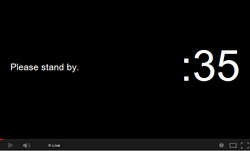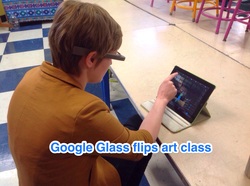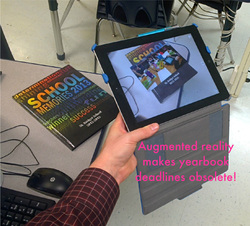
Last week, we had a tragedy strike our school. One of our recent graduates passed away after finishing a half marathon. She has two younger sisters and quite a few cousins who currently attend St. Bridget School. The unexpected and sudden loss of life shocked the school community. In a week where St. Patrick's Day, a 2-hr delay, and March Madness were supposed to dominate the discussion, a somber mood blanketed all interactions.
Her parents attend our parish, so we hosted the funeral mass. The girl had attended two area high schools, and both of them had classmates come pay their respects. One hour before the service started, the sanctuary was already packed with a standing room only crowd. People flowed into the commons area adjacent to the sanctuary, and folks were directed into our gym to watch it online.
Expecting a large crowd, one of the church staff prepared a laptop with webcam and sound hooked directly into the sound system to stream the service live on YouTube. It was quite the setup; MacGyver would have been proud! Unfortunately, the church wifi didn't reach into the balcony, so the feed had to be sent through parishioner's mobile hotspot. Despite the hurdles of time and available technology, the feed was live and running 40 minutes before the service began.
The problem occurred when we were working on the sound, which wasn't coming through properly. While the staff member was playing around with the cables right before the service began, one of the cables disconnected from the laptop...which happened to be providing the power. The staff member had to go participate in the service (which I didn't know until he left; I had assumed he would be up there the whole time) and nobody knew the password to the computer! I scrambled between the church and gym to figure out the problem and get another computer. 30 minutes into the service, the gentlemen who owned the computer texted the password to us just as I arrived with a new machine for the feed.
Once we had the feed running again, the audio took another minute to get straight. But even with a quality connection, we were limited by the bandwidth the cell phone could provide through its 3G network, so the signal quality for the audio was inconsistent. Unfortunately, the folks in our gym had a very different experience than those in the church and missed the homily. On the bright side, folks prayed the rosary together, were able to sing along with a few hymns, pass the peace, take communion, and recess with the parishioners.
Looking back, there are many things I would do differently (use a school-owned device, have the person who setup the system remain there during the ceremony, or add a wireless access point for the balcony). Yet, it humbled me and served as a reminder that both human life and technology can fail without warning.
Why am I sharing this story on my blog? Because I promised I would share my experiences and ideas--good, bad, and revolutionary. I hope you can either learn a lesson from what I did/did not do or empathize with my technology fiasco. Everyone's gotta have one sooner or later!
Her parents attend our parish, so we hosted the funeral mass. The girl had attended two area high schools, and both of them had classmates come pay their respects. One hour before the service started, the sanctuary was already packed with a standing room only crowd. People flowed into the commons area adjacent to the sanctuary, and folks were directed into our gym to watch it online.
Expecting a large crowd, one of the church staff prepared a laptop with webcam and sound hooked directly into the sound system to stream the service live on YouTube. It was quite the setup; MacGyver would have been proud! Unfortunately, the church wifi didn't reach into the balcony, so the feed had to be sent through parishioner's mobile hotspot. Despite the hurdles of time and available technology, the feed was live and running 40 minutes before the service began.
The problem occurred when we were working on the sound, which wasn't coming through properly. While the staff member was playing around with the cables right before the service began, one of the cables disconnected from the laptop...which happened to be providing the power. The staff member had to go participate in the service (which I didn't know until he left; I had assumed he would be up there the whole time) and nobody knew the password to the computer! I scrambled between the church and gym to figure out the problem and get another computer. 30 minutes into the service, the gentlemen who owned the computer texted the password to us just as I arrived with a new machine for the feed.
Once we had the feed running again, the audio took another minute to get straight. But even with a quality connection, we were limited by the bandwidth the cell phone could provide through its 3G network, so the signal quality for the audio was inconsistent. Unfortunately, the folks in our gym had a very different experience than those in the church and missed the homily. On the bright side, folks prayed the rosary together, were able to sing along with a few hymns, pass the peace, take communion, and recess with the parishioners.
Looking back, there are many things I would do differently (use a school-owned device, have the person who setup the system remain there during the ceremony, or add a wireless access point for the balcony). Yet, it humbled me and served as a reminder that both human life and technology can fail without warning.
Why am I sharing this story on my blog? Because I promised I would share my experiences and ideas--good, bad, and revolutionary. I hope you can either learn a lesson from what I did/did not do or empathize with my technology fiasco. Everyone's gotta have one sooner or later!


 RSS Feed
RSS Feed
